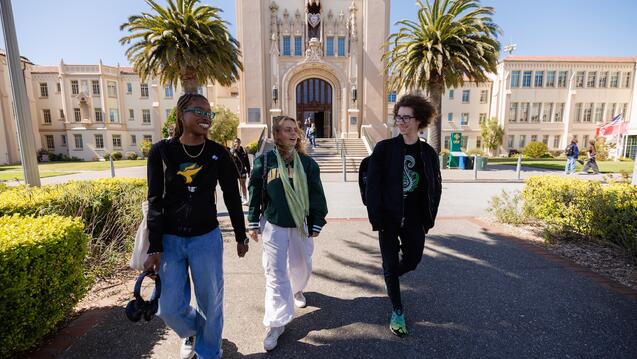USF Expands AI Offerings on Campus

In response to demand for training in artificial intelligence, USF is ramping up AI course offerings with the goal of employing computers in the service of humans and not the other way around.
“Right now in the field of AI we’re at a crossroads,” said Christopher Brooks, chair of the computer science department. “We can create a Star Trek world in which machines do most of the work, solve people’s problems, develop clean energy, and the benefits get shared equally. Or we can create a Blade Runner world, where a few people control the machines and make most of the money. Our students decide which of these two worlds we’re going to live in.”
USF added two courses this fall, and plans another four next spring and three more in fall 2025. Here, three professors describe their AI classes.
Foundations of AI, Christopher Brooks
“In this class we talk a little and do a lot. We talk about different types of AI — Chat GPT, self-driving cars, drones in Ukraine, spacecraft on Mars, medical devices assessing patients. We talk about how people learn, about how computers learn, about data mining and algorithms and different approaches, including search and knowledge representation. For practice, you’ll build your own AI technology, first from scratch and then with tools such as Scikit-learn. This is the hands-on experience that can get you hired in the growing field of AI."
Machine Learning, Kelsey Urgo
“You and your classmates learn how to use real-world datasets to make predictions about the world, like forecasting financial trends or weather patterns. The machine models we work with in this course are the underpinnings for the machine learning involved in very important research, including accurate predictions of hurricane paths and early diagnosis of disease.”
AI for Redistricting, Ellen Veomett
“We use a variety of AI techniques to detect if, where, and when gerrymandering is happening. Gerrymandering is when election district boundaries are drawn or redrawn to favor one political party — that’s partisan gerrymandering. Or when district boundaries are drawn or redrawn to dilute the voting power of particular people — that’s racial gerrymandering. In this class you learn how to collect and clean geospatial data, learn some of the legal and ethical challenges of redistricting, and analyze a real districting map to look for partisan and racial gerrymandering. You learn the techniques that expert witnesses use when they give testimony in gerrymandering court cases."


